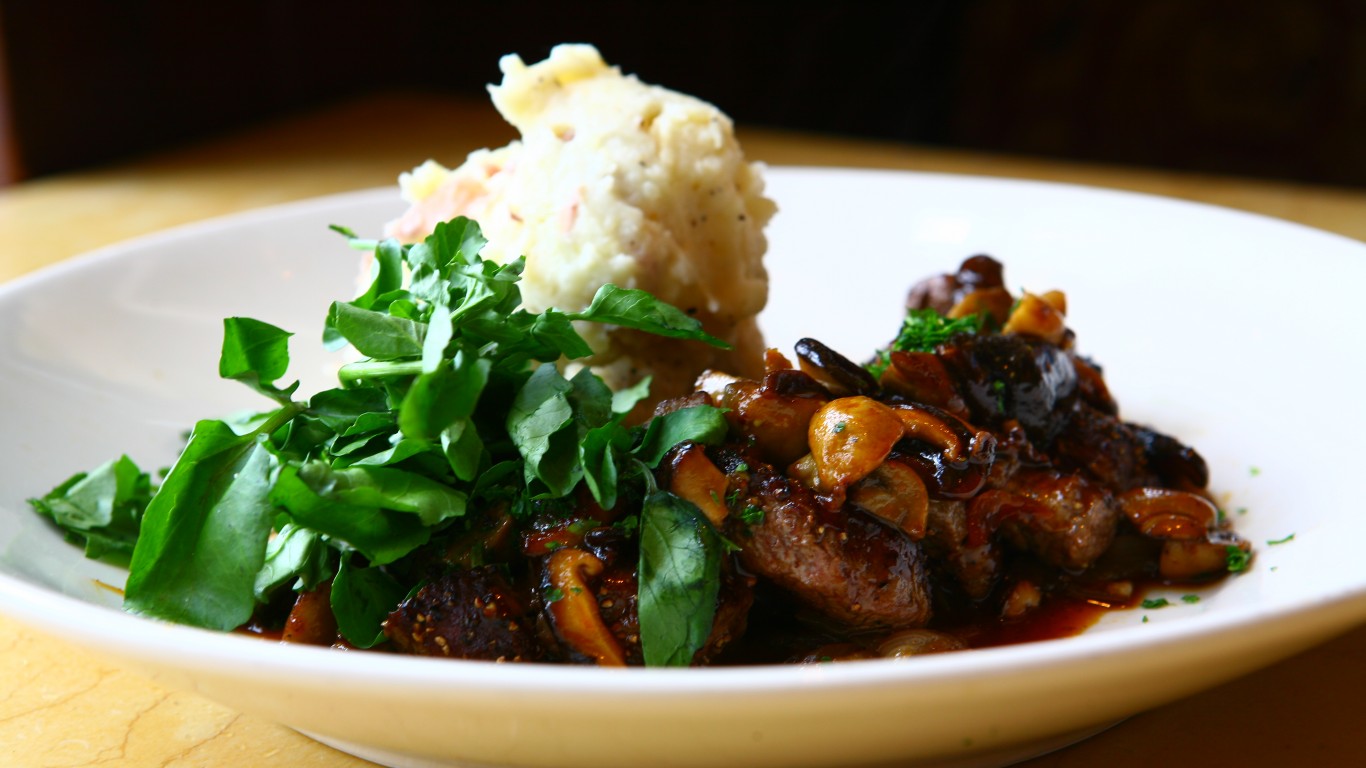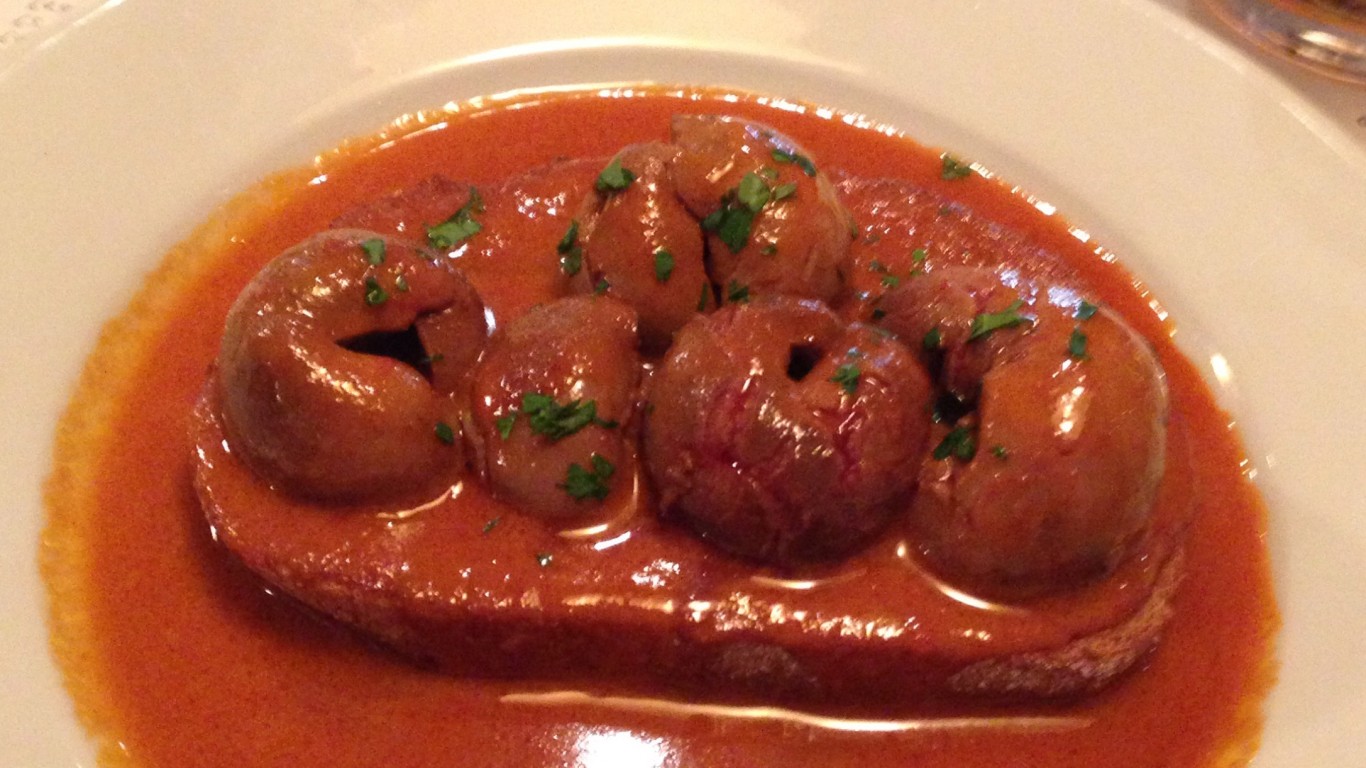
Food trends come and go, just like fashion trends. New ingredients, cuisines, chef creativity, and changing consumer tastes shape restaurant menus. Each era writes its own menu.
Before Wolfgang Puck and Alice Waters popularized pizza at their trendy California restaurants, pizza was mostly found at pizza parlors. Now it’s everywhere, even at fancy restaurants. About 20 years ago, most Americans had never heard of or eaten burrata, romesco, kimchi, pork belly, or grilled octopus. Today these foods are commonplace.
Meanwhile, some 20th century classics like Caesar salad, fettuccine Alfredo, roast chicken, and steak frites remain popular. But when was the last time you saw consommé madrilène, brook trout amandine, or baked Alaska on a menu?
To be sure, there are still places serving such retro dishes, ironically or not, but they are undeniably an endangered species. Sometimes the raw materials they’re based on are endangered species, too, like abalone and snapping turtle. Other times, we’ve just grown too sophisticated (or think we have) to eat fussy old-style fare like turkey Tetrazzini or steak Diane.
These extinct menu items are worth trying before they vanish completely. If you see them, give them a taste before they’re gone for good. These are food fads from the decade you were born.
Click here to see 25 retro restaurant dishes we might never see again
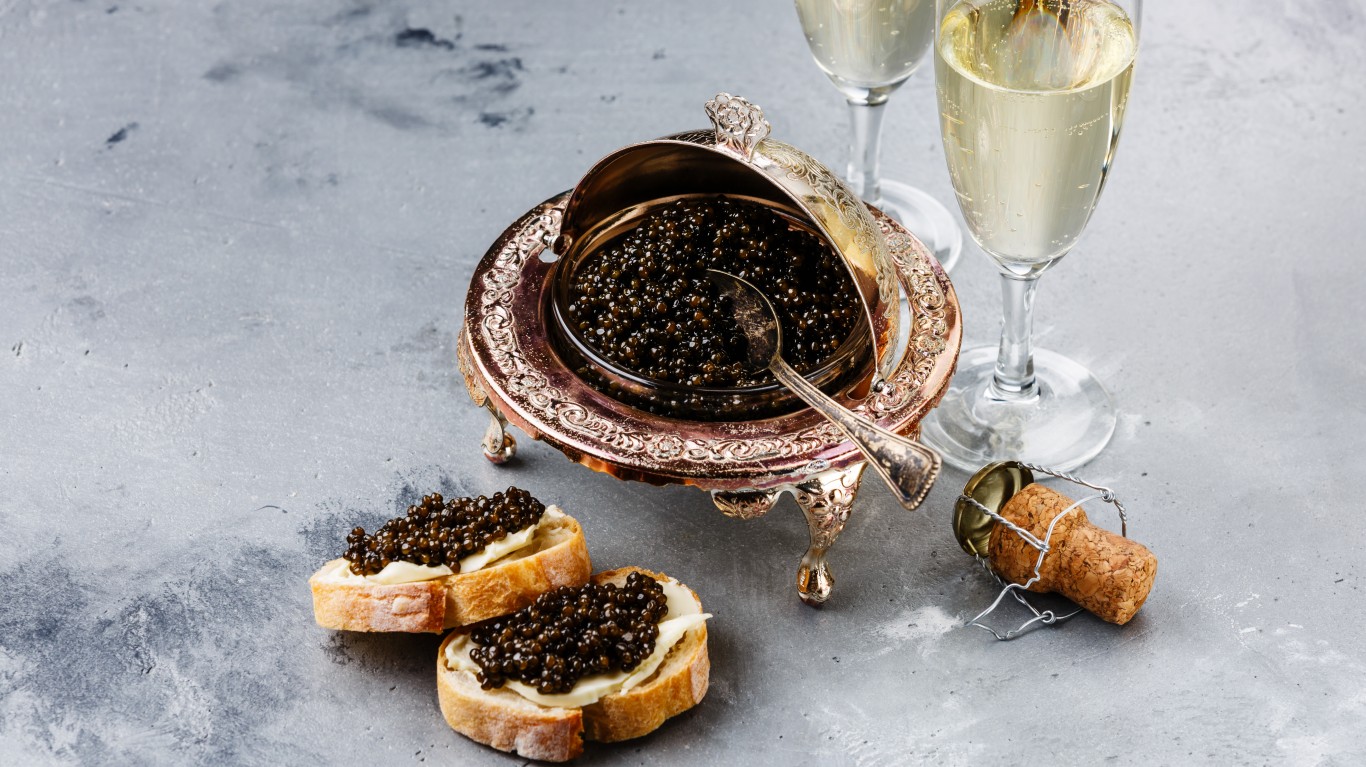
1. Caviar sandwich
This was a common appetizer in fancy restaurants in the mid-20th century. It’s just what it sounds like: two pieces of bread, usually either thin-sliced white or dark Russian rye, spread with butter or crème fraîche and a layer of caviar, assembled, and cut on the diagonal. There were also open-face versions, and the caviar could be either black (fancy Russian or Iranian sturgeon caviar in the old days, various substitutes in later years) or red (salmon roe).
[in-text-ad]

2. Chilled half grapefruit
It seems strange today, but a simple chilled half grapefruit, with the segments already helpfully loosened for easy eating, was sometimes offered as a first course at the nation’s better restaurants. (At the other end of the meal, there might also be a half grapefruit sprinkled with sugar and lightly browned under the broiler for dessert.)

3. Relish tray
It used to be that any restaurant of any quality welcomed diners with a complimentary bowl, often oval-shaped cut glass, crowded with what the French would call crudités — carrot and celery sticks, radishes, olives, and sometimes other raw vegetables, in a bowl of icy water to keep them crisp.
4. Turtle soup
English in origin, this rich, thick potage made with the meat of the common snapping turtle (the dish is sometimes called “snapper soup”), became a specialty of the Philadelphia area, and also a favorite in Minnesota and Louisiana. Though it is still occasionally found today, the soup — and eating turtle in general — has fallen out of favor, both because the turtles are an endangered species and because their meat has been found to contain high concentrations of industrial pollutants.
[in-text-ad-2]

5. Boula boula
Speaking of turtle soup, this refined version was a blend of turtle soup and green pea soup, spiked with sherry. The origin of both the recipe and the name are unknown, but it was being served in fancy dining rooms at least by the 1930s, and Jackie Kennedy had a famous recipe for it.
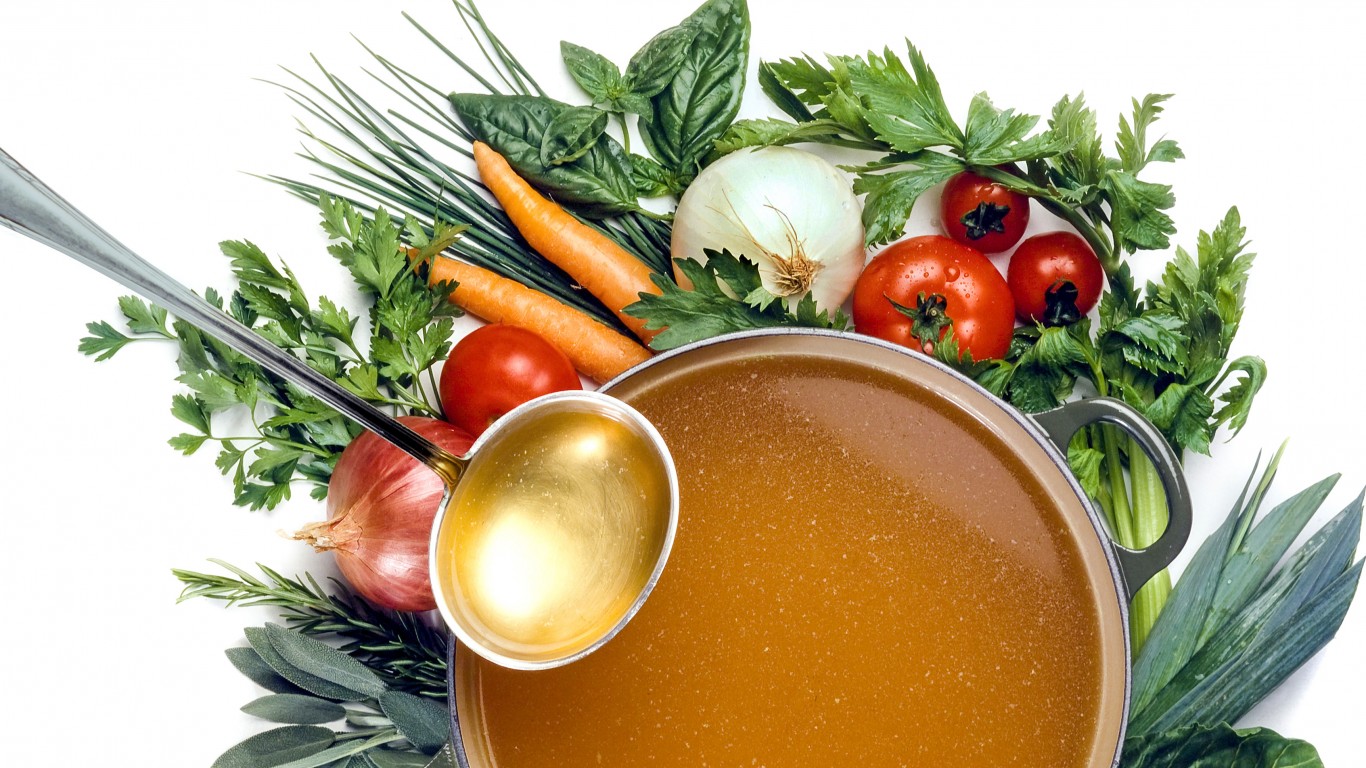
6. Consommé madrilène
Consommé is a rich clarified beef or chicken broth. This variation, made with beef, is flavored with tomato and served chilled. It used to be considered very elegant.
[in-text-ad]
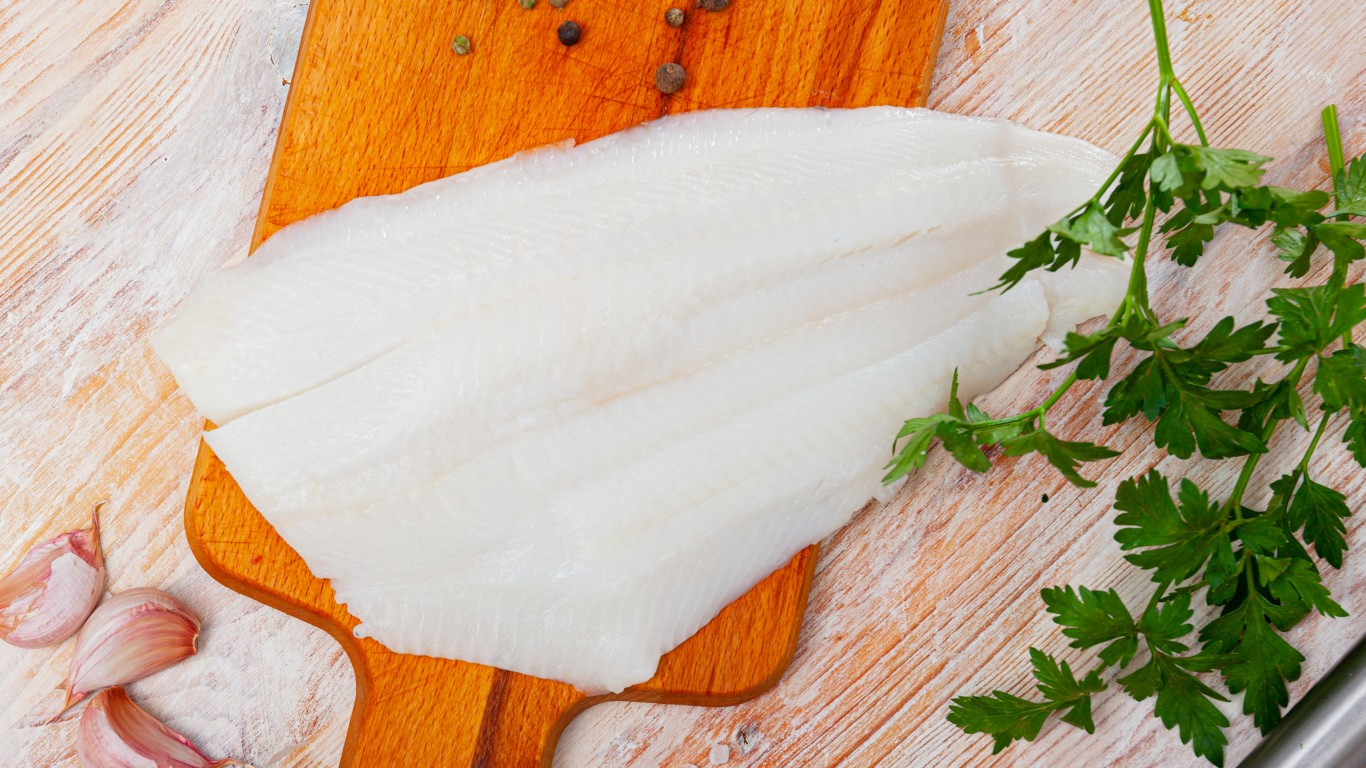
7. Sole Véronique
Invented by famed French chef Auguste Escoffier in London in 1898, this preparation of sole in a cream sauce with green grapes became one of the most common fine-dining clichés of mid-20th-century America.
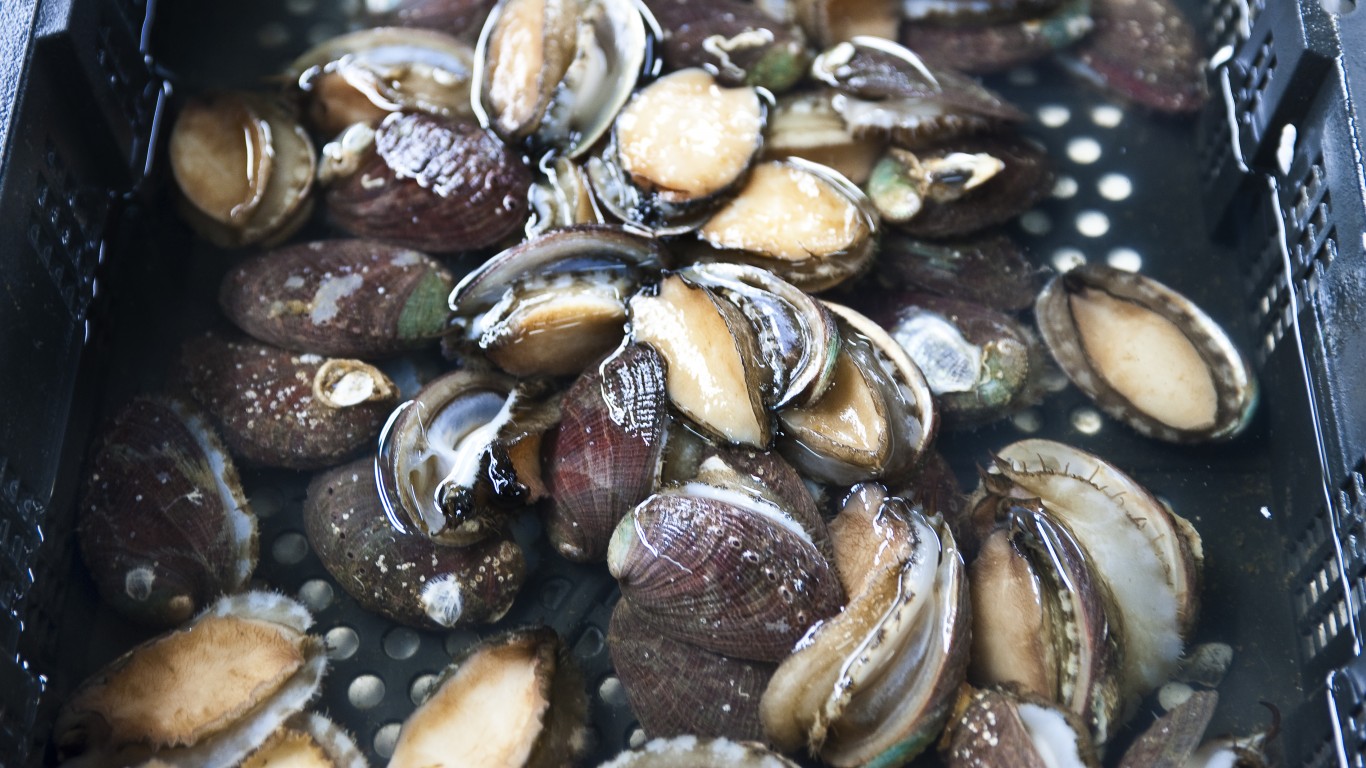
8. Abalone à la meunière
A univalve mollusc with flesh so tough that it has to be strenuously pounded to tenderize it before eating, abalone, simply dredged in flour and fried in butter, used to appear on menus at virtually every American restaurant on the West Coast. The dish disappeared from menus in 1997, after overfishing threatened the abalone population and commercial harvesting was banned.

9. Brook trout amandine
Trout amandine, cooked in butter with flakes of toasted almond (“amande” in French), was the other “fancy” fish dish, along with sole Véronique, once found on menus all over America. The name was often semi-translated as “trout almondine.”
[in-text-ad-2]
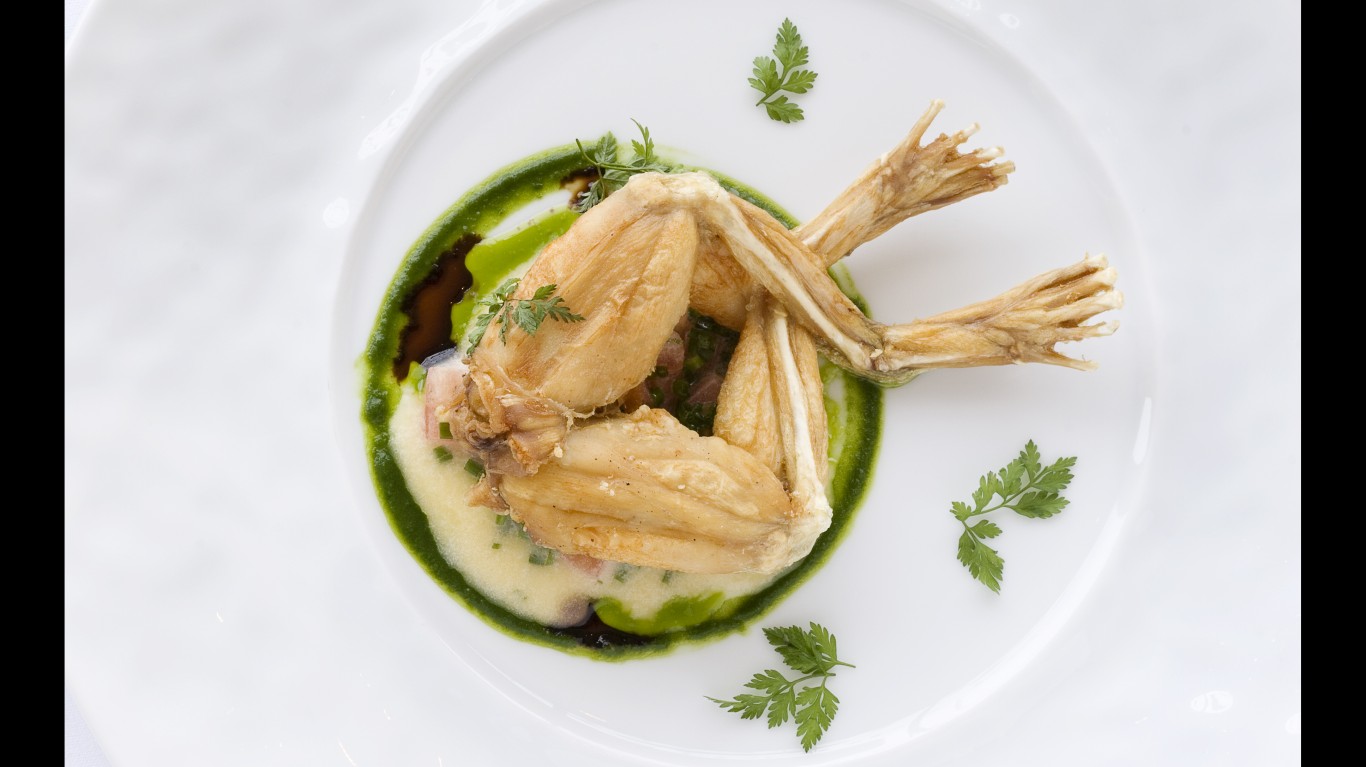
10. Frogs’ legs provençale
Though deep-fried frogs’ legs have long been a popular dish in the American South, where they aren’t considered particularly fancy, the French version became emblematic of fine dining in the 20th century around the country. Especially favored was this version, for which they’re pan-fried in butter with plenty of garlic and parsley.
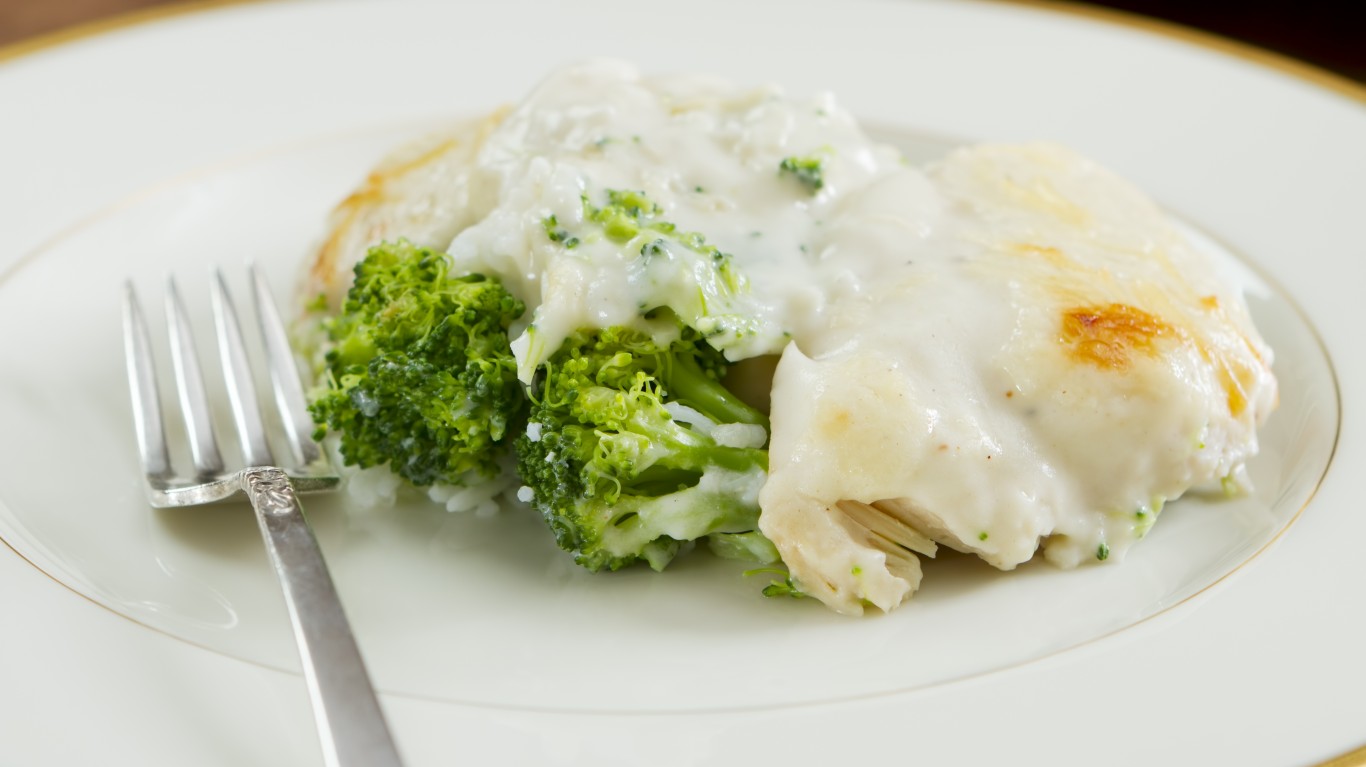
11. Chicken Divan
A casserole of chicken breasts and broccoli baked in Mornay sauce (a white sauce enriched with cheese), this dish was invented at, and named for, the Divan Parisien Restaurant in New York City. It was quite the rage in the 1950s, but by the following decade, it had vanished from most restaurant menus.
[in-text-ad]

12. Chicken Marengo
This dish of chicken sautéed in olive oil with garlic and tomatoes (and in its traditional form garnished with fried eggs and crayfish) is said to have been invented in honor of Napoleon Bonaparte by his chef after the French defeated the Austrian army at the Battle of Marengo in Italy in 1800. In the first half of the 20th century, it was often found in both French and Continental restaurants around the U.S..
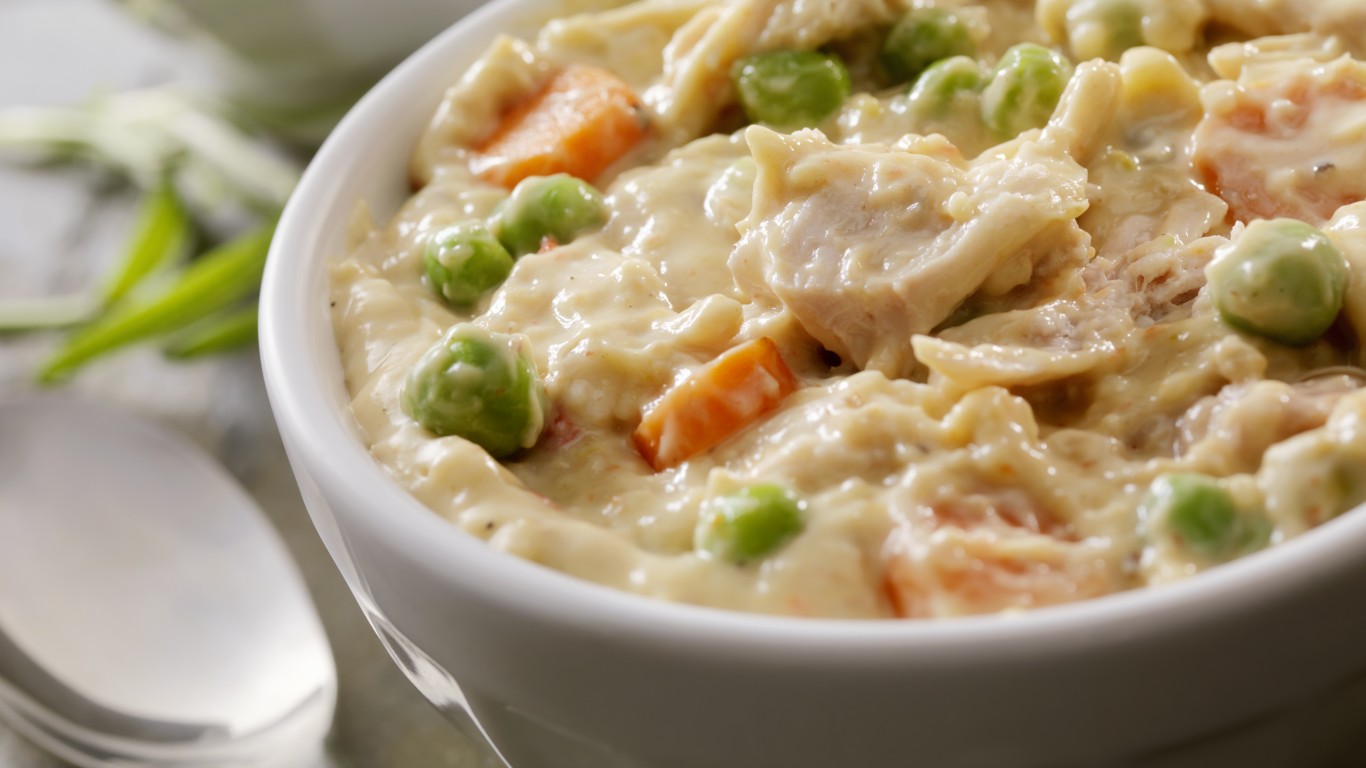
13. Chicken à la king
No luncheon menu in America in the mid-1900s was complete without this dish — diced chicken in a (usually) sherry-spiked cream sauce, typically with mushrooms, peas, and bits of pimento, served over noodles, rice or wild rice, or a puff-pastry shell. It dates from the late 19th century, though food historians debate whether it was invented in London, New York City, or Philadelphia.
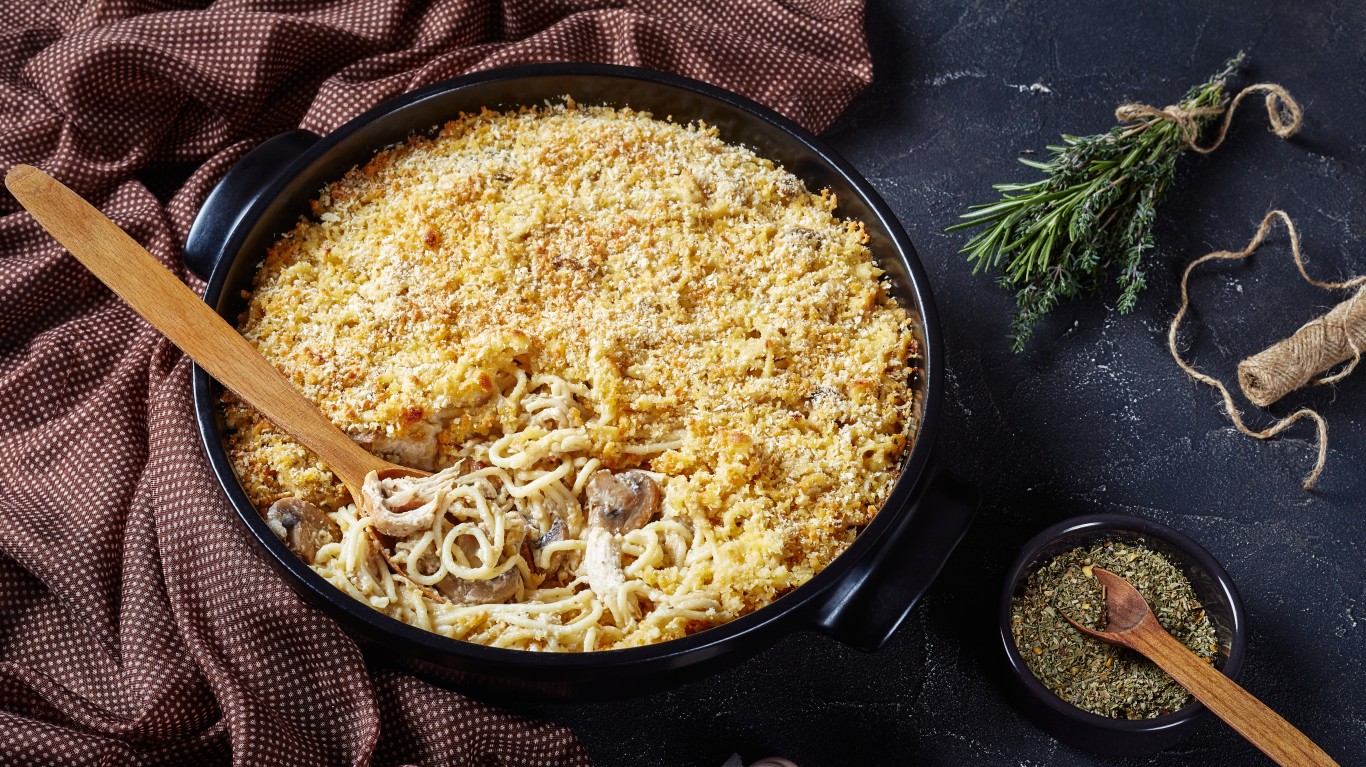
14. Turkey Tetrazzini
A relative of chicken à la king, turkey Tetrazzini was invented in the early years of the 20th century in San Francisco and named in honor of the Italian soprano Luisa Tetrazzini, who made her American debut in the city in 1905. It consists of diced turkey (sometimes chicken is substituted) and mushrooms in a sauce of butter, cream, and cheese, served over spaghetti, egg noodles, or some other form of pasta.
[in-text-ad-2]

15. Duck à l’orange
One of the most famous of all French dishes, once widely available in this country at French restaurants and other upscale establishments, this is simply roast duck glazed in an orange sauce. Despite its association with France, it is actually of Tuscan origin, and the oranges used in the original version were bitter, not sweet, providing a counterpoint to the richness of the duck.

16. Veal Marsala
Long an essential on Italian restaurant menus, this dish is made with veal scallops dredged in flour, lightly fried in olive oil, and then sauced with a dense reduction of Marsala, a fortified wine from Sicily.
[in-text-ad]
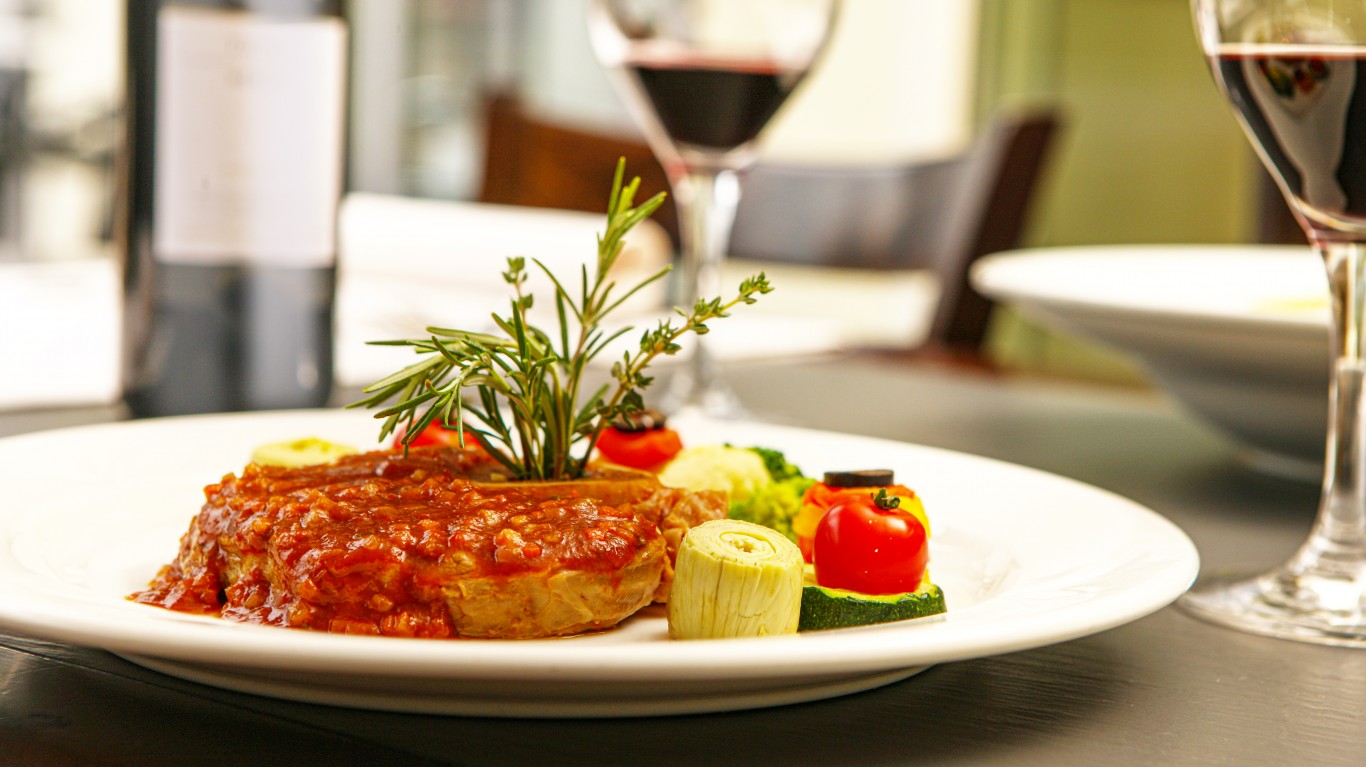
17. Swiss steak
Switzerland has nothing to do with this once-common preparation of braised tenderized steak, found more often at diners and coffee shops than in refined environments. It takes its name from the British term “swissing,” a means of stretching and rolling fabric, referring here to the tenderizing of the meat before it’s cooked.
18. Steak Diane
A classic of tableside preparation in Continental restaurants from the 1940s through ’60s, this is made by pan-frying thin slices of steak in butter, setting the meat aside, then adding such ingredients as brandy, sherry, mustard, Worcestershire sauce, lemon juice, and chives to the pan juices. The sauce is reduced and the meat added back briefly before serving.

19. Beef Wellington
Once considered among the most elegant of dinner entrees, beef Wellington (the provenance of the name is uncertain) was introduced in the late 19th or early 20th century and held sway on fancy menus at least through the 1980s. It consists of a whole tenderloin of beef coated with pâté de foie gras and duxelles (finely minced mushrooms, shallots, and herbs), then wrapped in a pastry crust and baked. In its most elevated version, slices of the pastry-enclosed meat were served moistened with truffle sauce.
[in-text-ad-2]
20. Devilled kidneys on toast
Offal used to be much more common on restaurant menus than it is today, and one popular dish — originally an English breakfast specialty — was this preparation of lamb’s kidneys in a pungent sauce made with mustard, Worcestershire sauce, cayenne pepper, and butter.
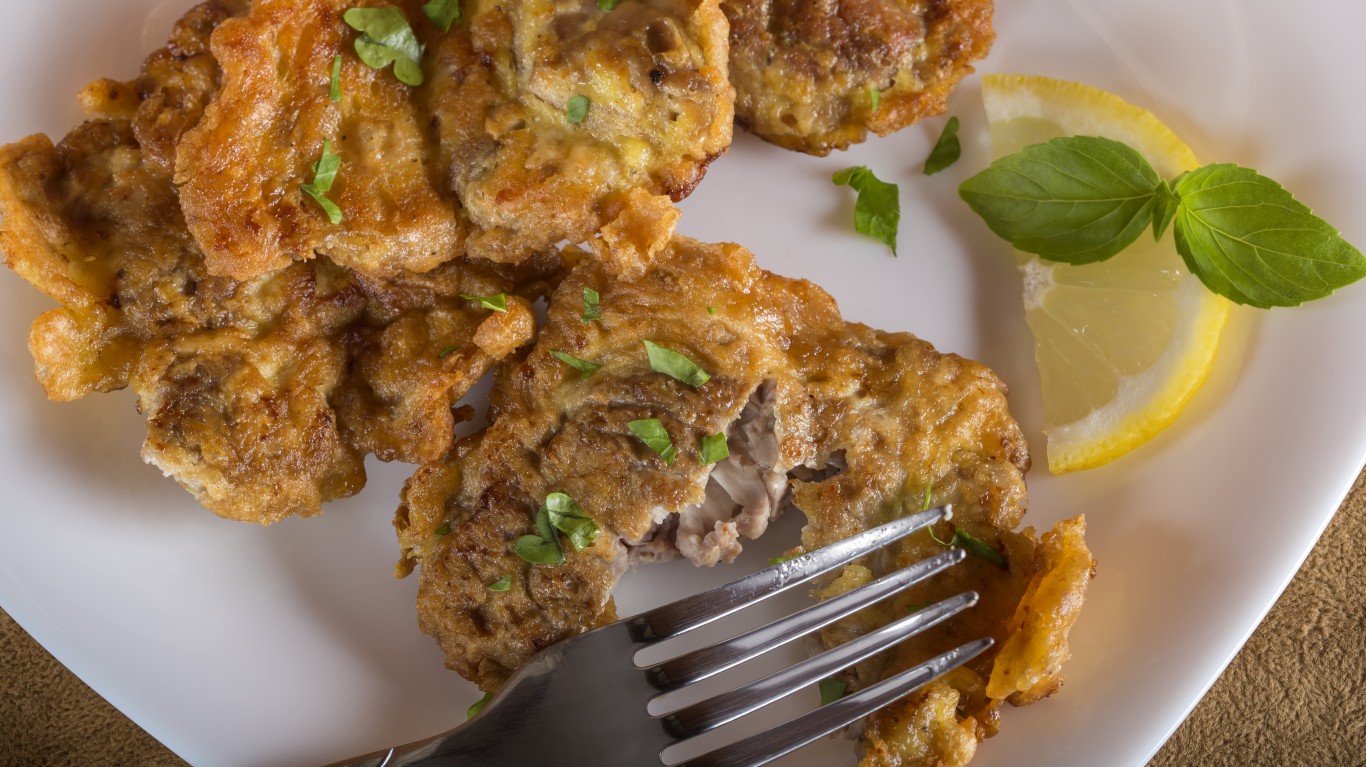
21. Calf’s brains in black butter
Among the offal dishes once found on restaurant menus in America, this was one of the most daunting to some diners. It’s just the brains, poached and then lightly floured and fried, then sauced with ample butter that has been darkened (but not burned) in a skillet with capers.
[in-text-ad]

22. Tripes à la mode de Caen
Caen is a city in Normandy, France, and this is its most famous gastronomic offering to the world. Tripe (a portion of cow’s stomach) is slow-cooked in a sealed pot in a sauce of cider, calvados, and vegetables for many hours. Every French restaurant in America used to list it on their menu.

23. Coupe Alexander
This old-fashioned dessert might well have ended dinner in a nice restaurant 50 or 60 years ago. Typically served in an oversized champagne glass or some other elegant glass bowl, it consists of vanilla ice cream topped with raspberries that have been soaked in kirsch (cherry brandy), in turn topped with orange sherbet, then garnished with toasted coconut.
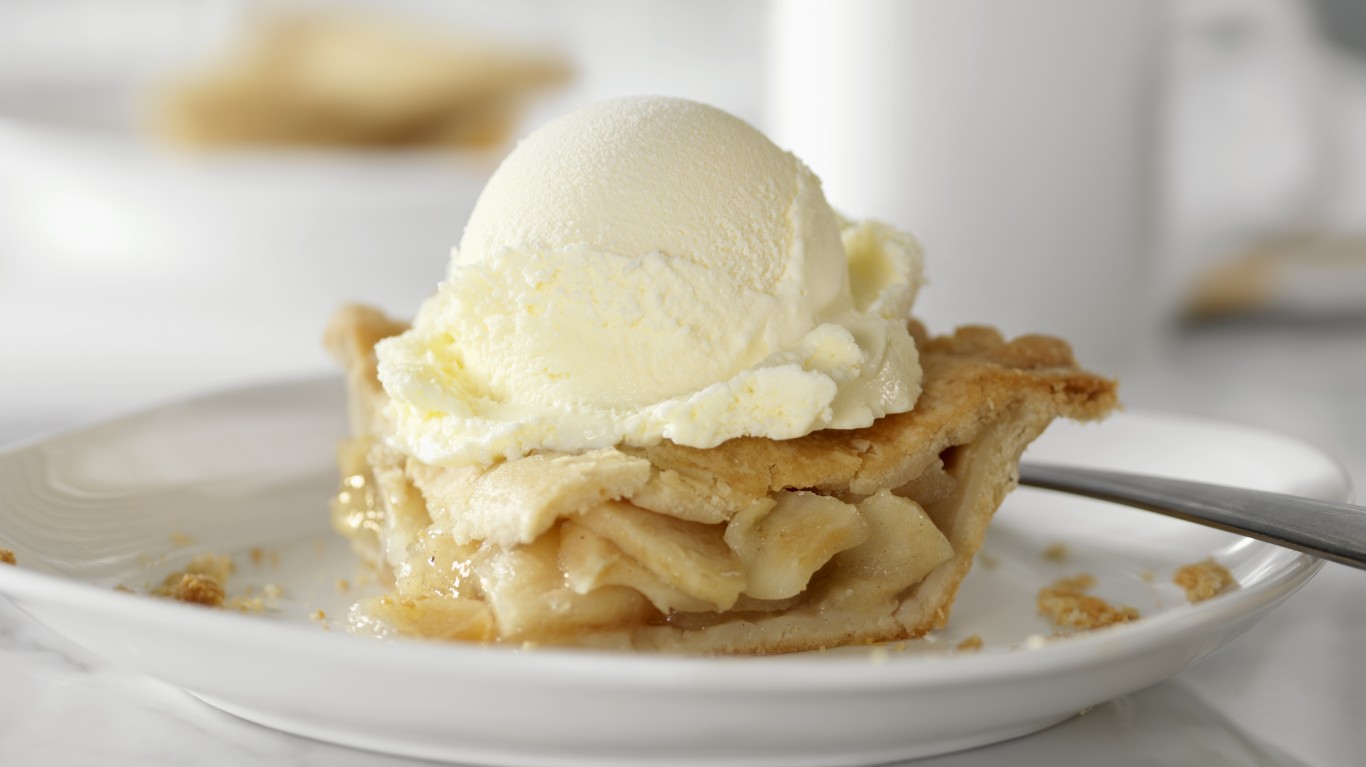
24. Apple pie à la mode
Nothing’s more American than apple pie, of course, and this classic hasn’t gone away — but outside of diners, it’s rare to find it on a restaurant menu anymore. At one time, however, this simple serving of a generous slice of pie topped with or accompanied by a scoop of (usually) vanilla ice cream was a standard dessert even in more formal places. An alternative was a slice of the pie warmed up and topped with a thick slice of cheddar cheese.
[in-text-ad-2]
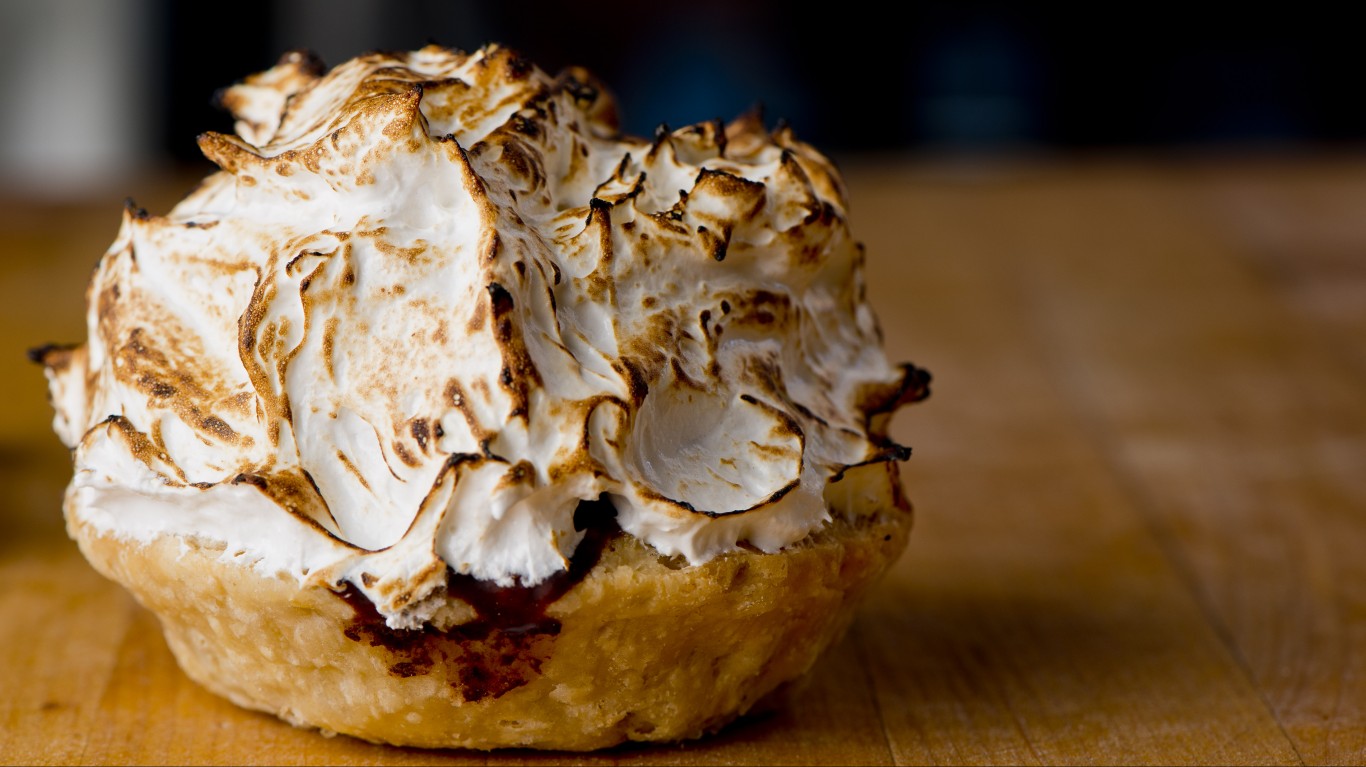
25. Baked Alaska
A novel preparation combining hot and cold, this is a dessert made by filling a sponge-cake-lined baking dish with ice cream, then covering the whole thing with meringue. The dish is then quickly cooked in a very hot oven, which stiffens and caramelizes the meringue while leaving the ice cream frozen. According to one story, it was invented at Antoine’s restaurant in New Orleans in 1867, the year that the U.S. bought Alaska from Russia.
It’s Your Money, Your Future—Own It (sponsor)
Retirement can be daunting, but it doesn’t need to be.
Imagine having an expert in your corner to help you with your financial goals. Someone to help you determine if you’re ahead, behind, or right on track. With SmartAsset, that’s not just a dream—it’s reality. This free tool connects you with pre-screened financial advisors who work in your best interests. It’s quick, it’s easy, so take the leap today and start planning smarter!
Don’t waste another minute; get started right here and help your retirement dreams become a retirement reality.
Thank you for reading! Have some feedback for us?
Contact the 24/7 Wall St. editorial team.
 24/7 Wall St.
24/7 Wall St.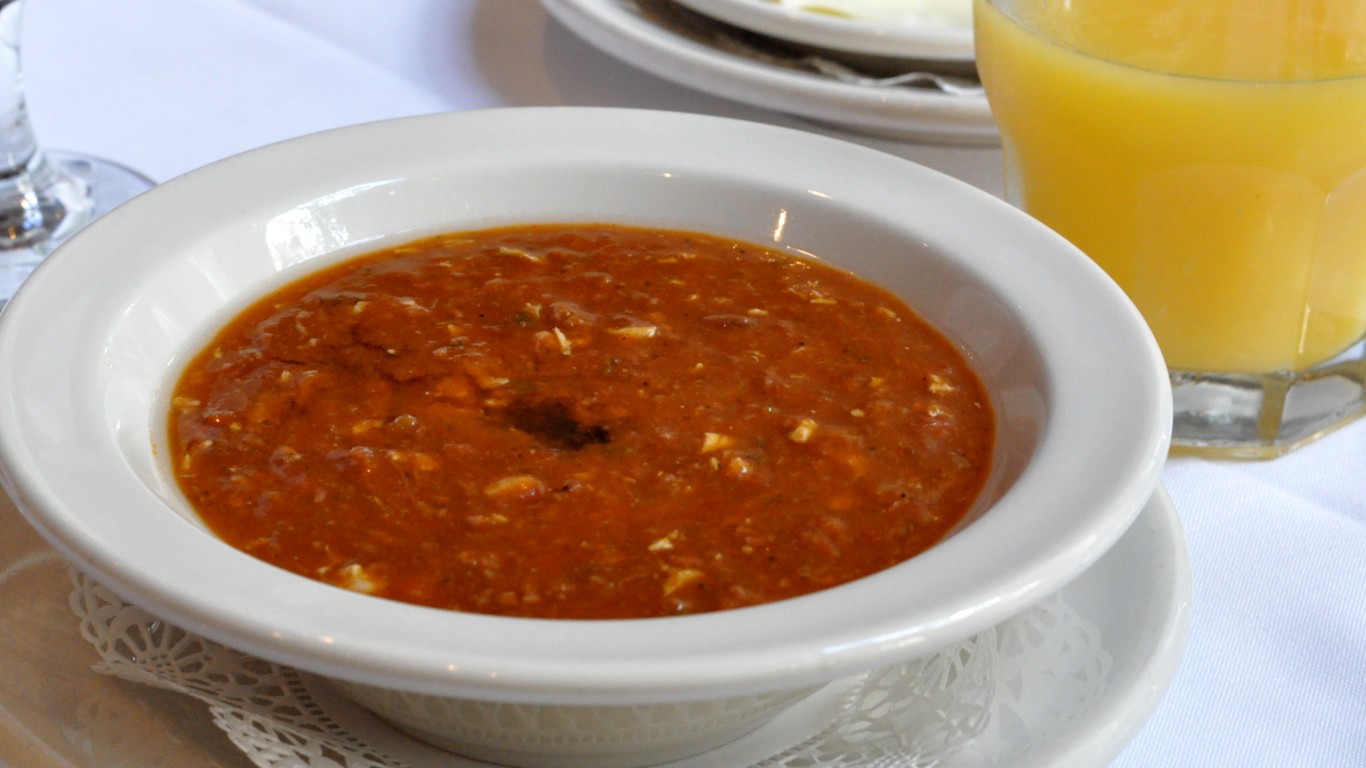
 24/7 Wall St.
24/7 Wall St.